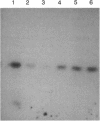Abstract
The amount of thrombin active in vivo in the intravascular space (blood and endothelial surface), both basally and in experimental intravascular coagulation, is measured by way of the accessibility of thrombin to intravascular hirudin. Blood samples from pigs given intravenous 125I-labeled hirudin contain 125I-labeled hirudin-thrombin complex in concentrations indicative of a basal thrombin concentration in vivo of 0.5 nmol/liter. Intravenous infusion of Salmonella endotoxin elicits an increase in the circulating concentration of hirudin-thrombin complex that begins within 15 min and is 20-30 times basal after 4 hr. Induction of mild intravascular coagulation is evidenced by a modest reduction in plasma fibrinogen concentrations. It is concluded that there is a basal pool of hirudin-accessible thrombin in the intravascular space that, were it free in the plasma phase, would be sufficient in principle to sustain intravascular coagulation.
Full text
PDF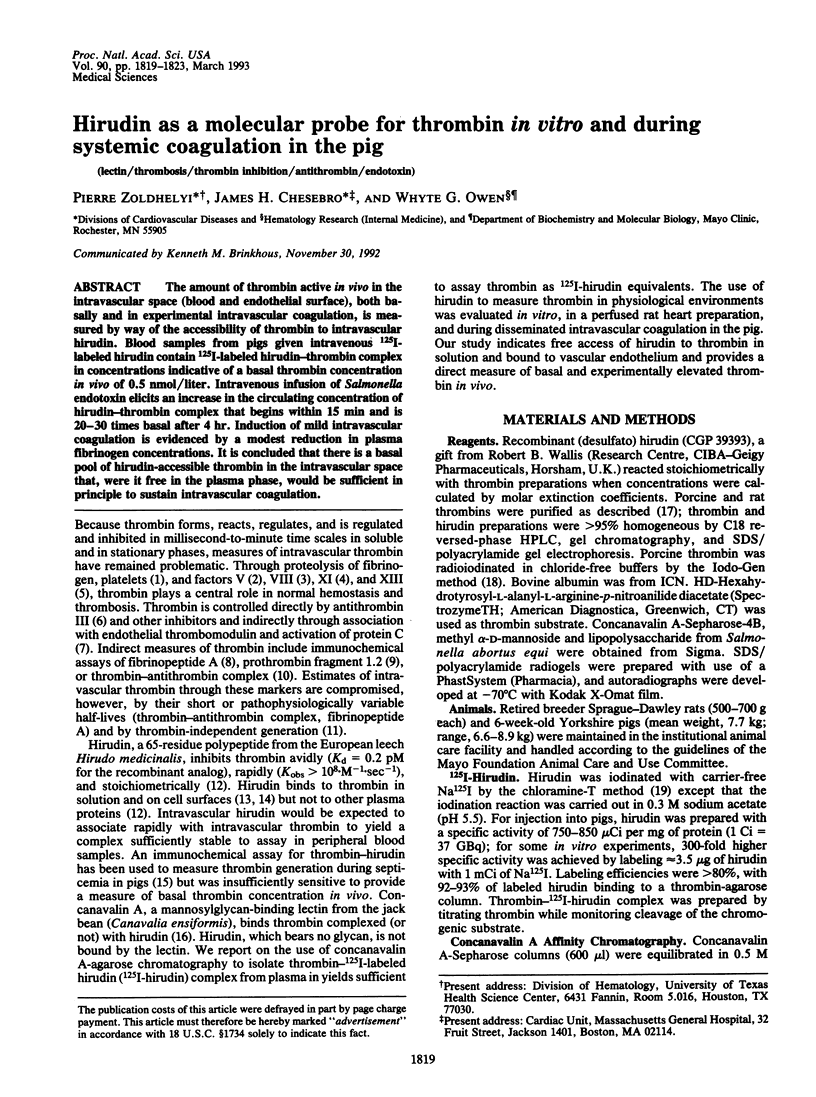
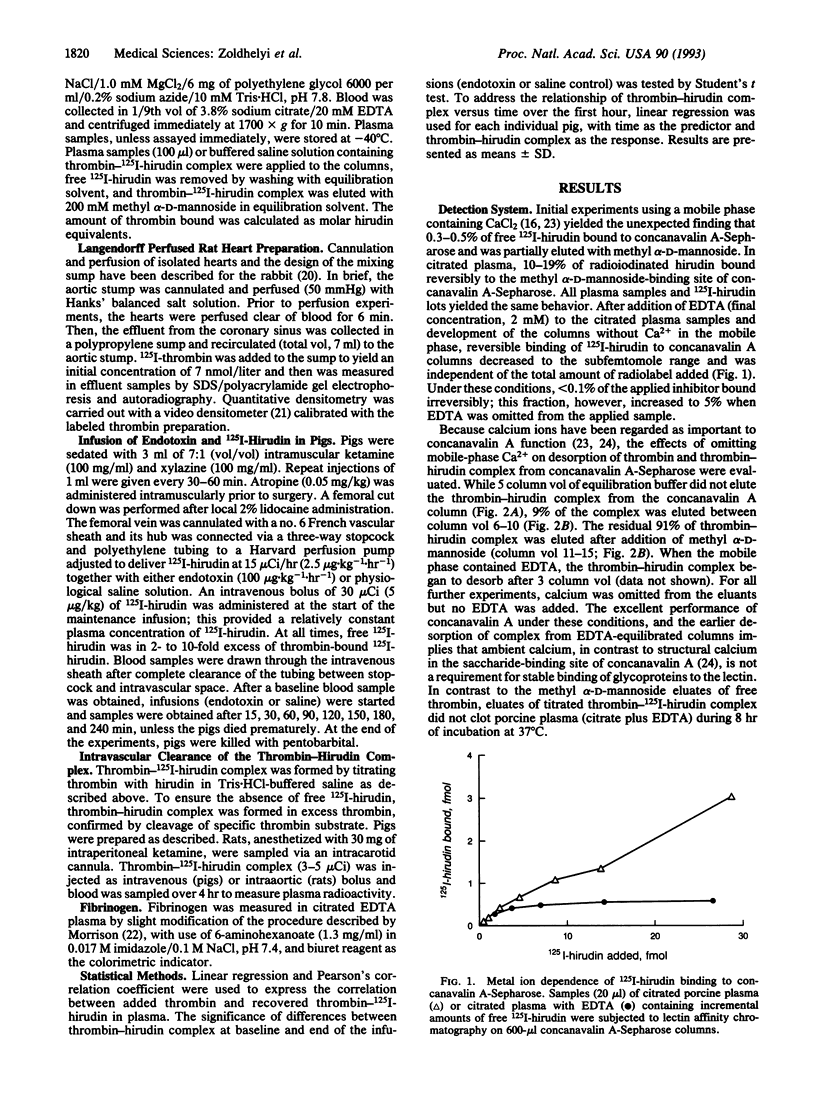
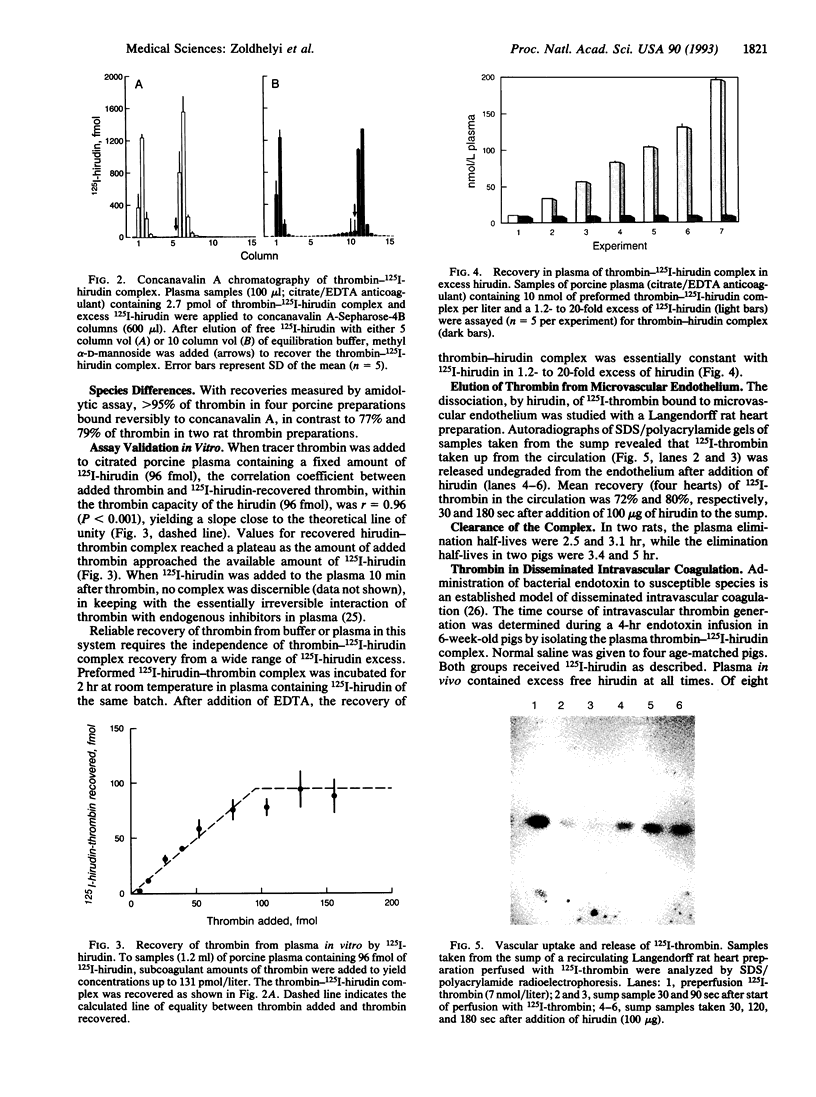
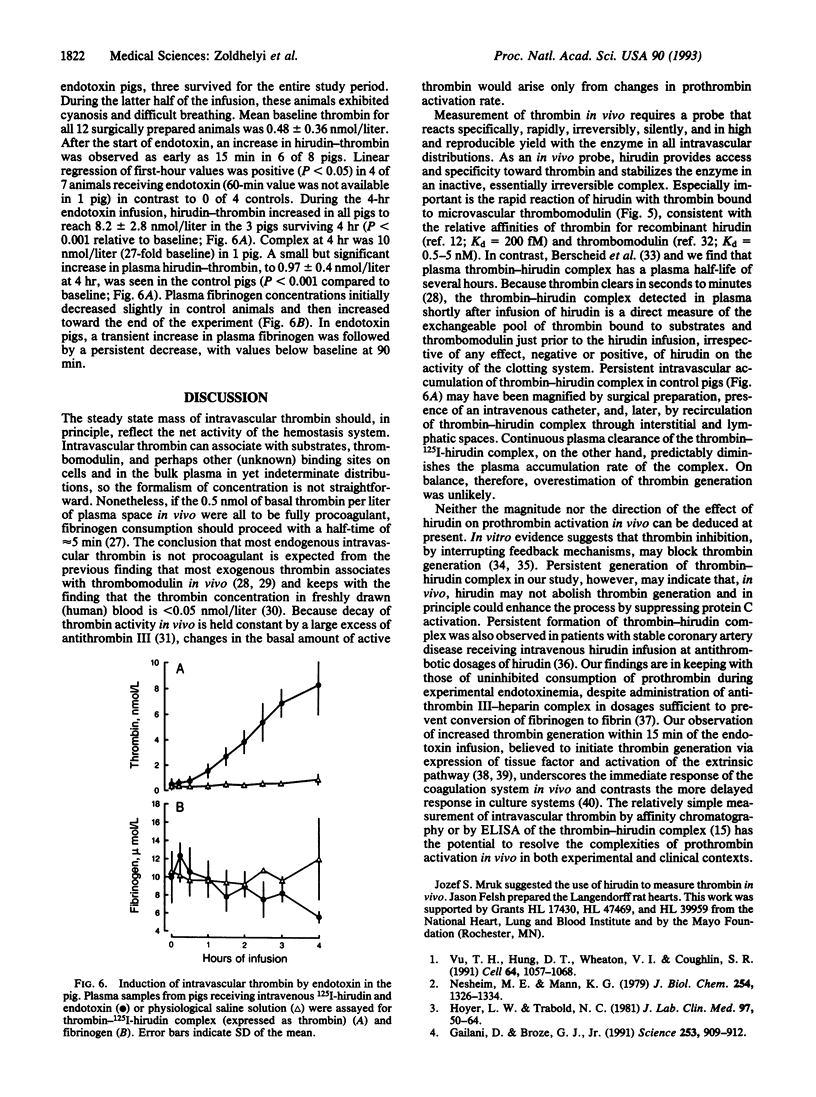
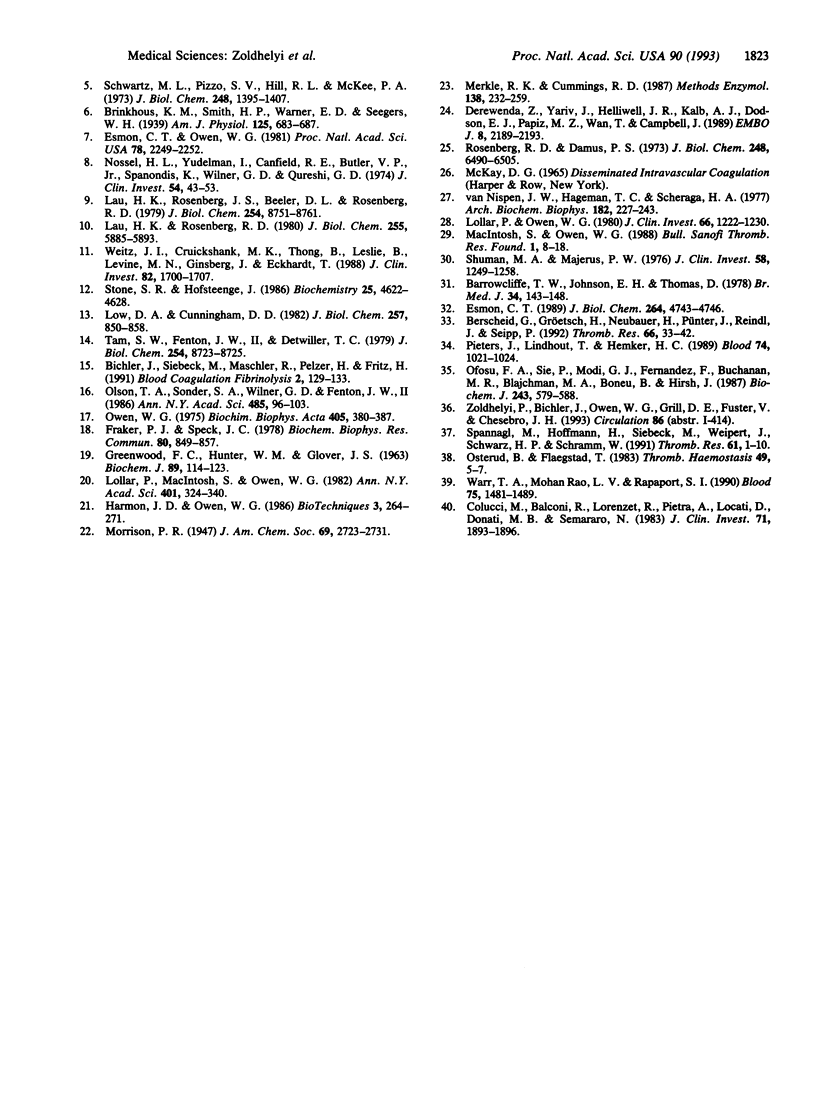
Images in this article
Selected References
These references are in PubMed. This may not be the complete list of references from this article.
- Barrowcliffe T. W., Johnson E. A., Thomas D. Antithrombin III and heparin. Br Med Bull. 1978 May;34(2):143–150. doi: 10.1093/oxfordjournals.bmb.a071484. [DOI] [PubMed] [Google Scholar]
- Berscheid G., Grötsch H., Neubauer H., Pünter J., Reindl J., Seipp P. Determination of r DNA hirudin and A-human thrombin- hirudin complex in plasma samples: enzyme linked immunosorbent assays for hirudin and complex vs. chromogenic thrombin substrate assay. Thromb Res. 1992 Apr 1;66(1):33–42. doi: 10.1016/0049-3848(92)90153-2. [DOI] [PubMed] [Google Scholar]
- Bichler J., Siebeck M., Maschler R., Pelzer H., Fritz H. Determination of thrombin-hirudin complex in plasma with an enzyme-linked immunosorbent assay. Blood Coagul Fibrinolysis. 1991 Feb;2(1):129–133. doi: 10.1097/00001721-199102000-00020. [DOI] [PubMed] [Google Scholar]
- Colucci M., Balconi G., Lorenzet R., Pietra A., Locati D., Donati M. B., Semeraro N. Cultured human endothelial cells generate tissue factor in response to endotoxin. J Clin Invest. 1983 Jun;71(6):1893–1896. doi: 10.1172/JCI110945. [DOI] [PMC free article] [PubMed] [Google Scholar]
- Derewenda Z., Yariv J., Helliwell J. R., Kalb A. J., Dodson E. J., Papiz M. Z., Wan T., Campbell J. The structure of the saccharide-binding site of concanavalin A. EMBO J. 1989 Aug;8(8):2189–2193. doi: 10.1002/j.1460-2075.1989.tb08341.x. [DOI] [PMC free article] [PubMed] [Google Scholar]
- Esmon C. T., Owen W. G. Identification of an endothelial cell cofactor for thrombin-catalyzed activation of protein C. Proc Natl Acad Sci U S A. 1981 Apr;78(4):2249–2252. doi: 10.1073/pnas.78.4.2249. [DOI] [PMC free article] [PubMed] [Google Scholar]
- Esmon C. T. The roles of protein C and thrombomodulin in the regulation of blood coagulation. J Biol Chem. 1989 Mar 25;264(9):4743–4746. [PubMed] [Google Scholar]
- Fraker P. J., Speck J. C., Jr Protein and cell membrane iodinations with a sparingly soluble chloroamide, 1,3,4,6-tetrachloro-3a,6a-diphrenylglycoluril. Biochem Biophys Res Commun. 1978 Feb 28;80(4):849–857. doi: 10.1016/0006-291x(78)91322-0. [DOI] [PubMed] [Google Scholar]
- GREENWOOD F. C., HUNTER W. M., GLOVER J. S. THE PREPARATION OF I-131-LABELLED HUMAN GROWTH HORMONE OF HIGH SPECIFIC RADIOACTIVITY. Biochem J. 1963 Oct;89:114–123. doi: 10.1042/bj0890114. [DOI] [PMC free article] [PubMed] [Google Scholar]
- Gailani D., Broze G. J., Jr Factor XI activation in a revised model of blood coagulation. Science. 1991 Aug 23;253(5022):909–912. doi: 10.1126/science.1652157. [DOI] [PubMed] [Google Scholar]
- Hoyer L. W., Trabold N. C. The effect of thrombin on human factor VIII. Cleavage of the factor VIII procoagulant protein during activation. J Lab Clin Med. 1981 Jan;97(1):50–64. [PubMed] [Google Scholar]
- Lau H. K., Rosenberg J. S., Beeler D. L., Rosenberg R. D. The isolation and characterization of a specific antibody population directed against the prothrombin activation fragments F2 and F1 + 2. J Biol Chem. 1979 Sep 25;254(18):8751–8761. [PubMed] [Google Scholar]
- Lau H. K., Rosenberg R. D. The isolation and characterization of a specific antibody population directed against the thrombin antithrombin complex. J Biol Chem. 1980 Jun 25;255(12):5885–5893. [PubMed] [Google Scholar]
- Lollar P., Owen W. G. Clearance of thrombin from circulation in rabbits by high-affinity binding sites on endothelium. Possible role in the inactivation of thrombin by antithrombin III. J Clin Invest. 1980 Dec;66(6):1222–1230. doi: 10.1172/JCI109973. [DOI] [PMC free article] [PubMed] [Google Scholar]
- Low D. A., Cunningham D. D. A novel method for measuring cell surface-bound thrombin. Detection of iodination-induced changes in thrombin-binding affinity. J Biol Chem. 1982 Jan 25;257(2):850–858. [PubMed] [Google Scholar]
- Merkle R. K., Cummings R. D. Lectin affinity chromatography of glycopeptides. Methods Enzymol. 1987;138:232–259. doi: 10.1016/0076-6879(87)38020-6. [DOI] [PubMed] [Google Scholar]
- Nesheim M. E., Mann K. G. Thrombin-catalyzed activation of single chain bovine factor V. J Biol Chem. 1979 Feb 25;254(4):1326–1334. [PubMed] [Google Scholar]
- Nossel H. L., Yudelman I., Canfield R. E., Butler V. P., Jr, Spanondis K., Wilner G. D., Qureshi G. D. Measurement of fibrinopeptide A in human blood. J Clin Invest. 1974 Jul;54(1):43–53. doi: 10.1172/JCI107749. [DOI] [PMC free article] [PubMed] [Google Scholar]
- Ofosu F. A., Sie P., Modi G. J., Fernandez F., Buchanan M. R., Blajchman M. A., Boneu B., Hirsh J. The inhibition of thrombin-dependent positive-feedback reactions is critical to the expression of the anticoagulant effect of heparin. Biochem J. 1987 Apr 15;243(2):579–588. doi: 10.1042/bj2430579. [DOI] [PMC free article] [PubMed] [Google Scholar]
- Olson T. A., Sonder S. A., Wilner G. D., Fenton J. W., 2nd Heparin binding in proximity to the catalytic site of human alpha-thrombin. Ann N Y Acad Sci. 1986;485:96–103. doi: 10.1111/j.1749-6632.1986.tb34571.x. [DOI] [PubMed] [Google Scholar]
- Osterud B., Flaegstad T. Increased tissue thromboplastin activity in monocytes of patients with meningococcal infection: related to an unfavourable prognosis. Thromb Haemost. 1983 Feb 28;49(1):5–7. [PubMed] [Google Scholar]
- Owen W. G. Evidence for the formation of an ester between thrombin and heparin cofactor. Biochim Biophys Acta. 1975 Oct 20;405(2):380–387. doi: 10.1016/0005-2795(75)90103-8. [DOI] [PubMed] [Google Scholar]
- Pieters J., Lindhout T., Hemker H. C. In situ-generated thrombin is the only enzyme that effectively activates factor VIII and factor V in thromboplastin-activated plasma. Blood. 1989 Aug 15;74(3):1021–1024. [PubMed] [Google Scholar]
- Rosenberg R. D., Damus P. S. The purification and mechanism of action of human antithrombin-heparin cofactor. J Biol Chem. 1973 Sep 25;248(18):6490–6505. [PubMed] [Google Scholar]
- Schwartz M. L., Pizzo S. V., Hill R. L., McKee P. A. Human Factor XIII from plasma and platelets. Molecular weights, subunit structures, proteolytic activation, and cross-linking of fibrinogen and fibrin. J Biol Chem. 1973 Feb 25;248(4):1395–1407. [PubMed] [Google Scholar]
- Shuman M. A., Majerus P. W. The measurement of thrombin in clotting blood by radioimmunoassay. J Clin Invest. 1976 Nov;58(5):1249–1258. doi: 10.1172/JCI108579. [DOI] [PMC free article] [PubMed] [Google Scholar]
- Spannagl M., Hoffmann H., Siebeck M., Weipert J., Schwarz H. P., Schramm W. A purified antithrombin III--heparin complex as a potent inhibitor of thrombin in porcine endotoxin shock. Thromb Res. 1991 Jan 1;61(1):1–10. doi: 10.1016/0049-3848(91)90163-q. [DOI] [PubMed] [Google Scholar]
- Stone S. R., Hofsteenge J. Kinetics of the inhibition of thrombin by hirudin. Biochemistry. 1986 Aug 12;25(16):4622–4628. doi: 10.1021/bi00364a025. [DOI] [PubMed] [Google Scholar]
- Tam S. W., Fenton J. W., 2nd, Detwiler T. C. Dissociation of thrombin from platelets by hirudin. Evidence for receptor processing. J Biol Chem. 1979 Sep 25;254(18):8723–8725. [PubMed] [Google Scholar]
- Vu T. K., Hung D. T., Wheaton V. I., Coughlin S. R. Molecular cloning of a functional thrombin receptor reveals a novel proteolytic mechanism of receptor activation. Cell. 1991 Mar 22;64(6):1057–1068. doi: 10.1016/0092-8674(91)90261-v. [DOI] [PubMed] [Google Scholar]
- Warr T. A., Rao L. V., Rapaport S. I. Disseminated intravascular coagulation in rabbits induced by administration of endotoxin or tissue factor: effect of anti-tissue factor antibodies and measurement of plasma extrinsic pathway inhibitor activity. Blood. 1990 Apr 1;75(7):1481–1489. [PubMed] [Google Scholar]
- Weitz J. I., Cruickshank M. K., Thong B., Leslie B., Levine M. N., Ginsberg J., Eckhardt T. Human tissue-type plasminogen activator releases fibrinopeptides A and B from fibrinogen. J Clin Invest. 1988 Nov;82(5):1700–1707. doi: 10.1172/JCI113783. [DOI] [PMC free article] [PubMed] [Google Scholar]
- van Nispen J. W., Hageman T. C., Scheraga H. A. Mechanism of action of thrombin on fibrinogen. The reaction of thrombin with fibrinogen-like peptides containing 11, 14, and 16 residues. Arch Biochem Biophys. 1977 Jul;182(1):227–243. doi: 10.1016/0003-9861(77)90303-4. [DOI] [PubMed] [Google Scholar]



